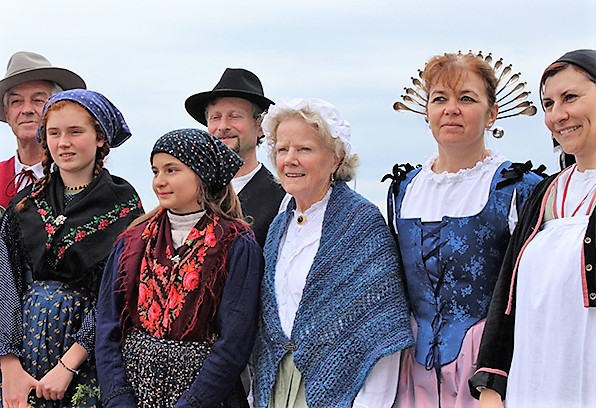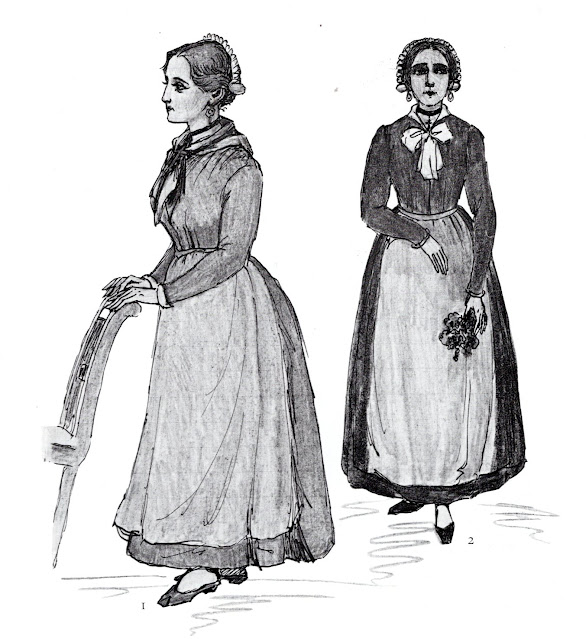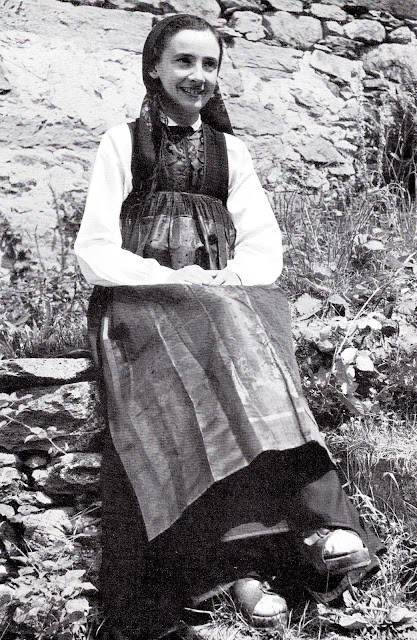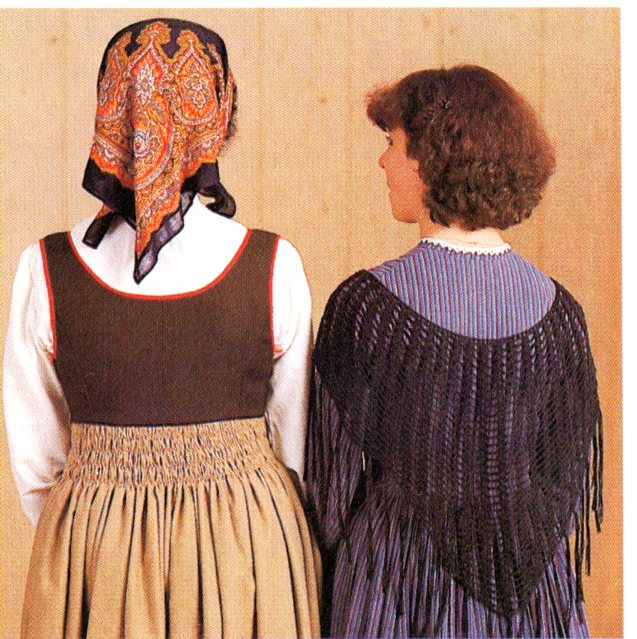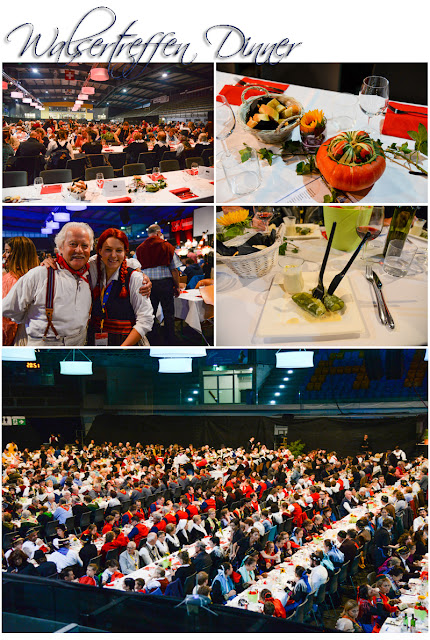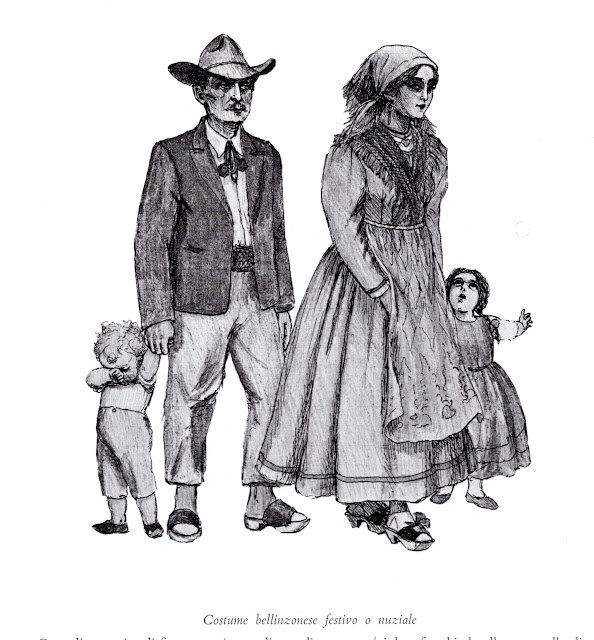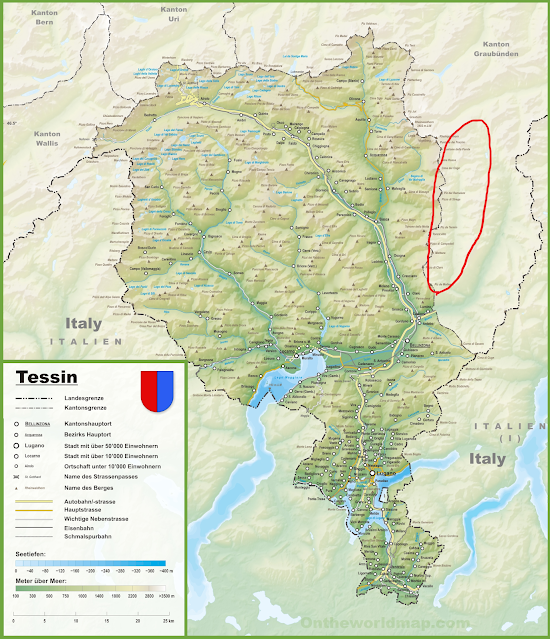Hello all,
Today I will be covering the folk costumes of Italian - speaking Switzerland, including the Canton of Ticino, and the valleys of Mesolcina, Bregaglia and Poschiavo in the Canton of Grigio or Graubunden. Most of these localities originally spoke variations of Lombard, which today is giving way to Standard Italian. In the latter two valleys, Romansch was a significant language in the past. The history of this region is complicated, and involved various conflicts between nascent Switzerland, Italy, Napoleon's Empire and others. In 1798, however, the inhabitants of Ticino voted to remain part of Switzerland, [except for the singe town of Campione, which remains an Italian exclave]. The canton is traditionally divided into 2 regions, Sottoceneri and Sopraceneri.
For this article I have relied heavily on the drawings of Rachele Giudici, who left us a valuable record of the culture of this region.
Here is a linguistic map of Switzerland.
Here are two maps of Ticino, showing physical features, and a schematic of the locations of the various valleys and their names.
Sottoceneri
This is the southernmost region of Ticino, and culturally is completely Lombard. The local costume is identical to that found across the border in Brianza and other neighboring parts of Lombardy. I have written a more in depth article on this costume. This costume is characterized by a sun shaped headdress formed of many silver hairpins, 'la raggiera'.
Val Colla
This valley is found to the northeast of Lugano, and is drained by the Cassarate River, which empties into Lake Lugano.
This area is found to the northwest of Lugano, and consists of the valley of the Magliasina River.
This is located north of the Monte Ceneri pass. This is much larger geographically, but includes many high mountains and has fewer inhabitants.
Locarno
This consists of the City of Locarno and the northern part of Lago Maggiore. The costume here is again reminiscent of that of lowland Lombardy.
Centovalli and Valle Onsernone
Val Maggia
This is one of the major valleys of northwestern Ticino. There are a couple different costumes in use. The following images are not defined further, making me assume that they are from the main course of this valley.
1 Main Valley
This last image is of a group which works to maintain the costume and traditions of this valley. Here is a video of one of their presentations of Folk Culture.
Cavergno
This village is located in the upper Valle Maggia, where the two rivers converge from the upper valleys. Here are some sketches by Rachele Giudici of the costume of this community.
2 Fusio, Peccia, Lavizzara
This side valley lies in the northeast of Val Maggia and is labelled 2 on the map above.
3 Bosco Gurin
This is a side valley on the western side of Val Maggia, labelled 3 on the map above. While Ticino is overwhelmingly Italian [Lombard] speaking, the upper reaches of this valley are inhabited by Allemanic [German] speaking Walser, who colonized this valley from Val Famazza in northeastern Piemonte, and ultimately from Canton Wallis in Switzerland.
This costume has some similarity to that of Val Maggia, having a long gown with no real waist. This is often put forth as the typical costume of Ticino.
Valle Leventina
This region lies in the north of the canton. The valley is fairly wide and has some large towns, which add an urban feel to some of the costumes.
Country costumes;
Chironico
Val Blenio
Costume of the head of the valley, in the northwest.
Riviera
These costumes are from around Biasca, at the upper end of this region.
This concludes the Canton of Ticino, but I will continue and also cover the Italian speaking valleys of the Canton of Grigio, or Graubunden.
Val Calanca
Val Calanca officially lies in Graubunden, but is contiguous with Ticino, and forms part of the same river basin. It lies just east of Riviera.
Val Mesolcina
This valley lies just upriver from Bellinzone, and while it belongs to Graubunden, it forms part of the same physical area as Ticino.
Val Bregaglia
Val Bregaglia used to be Romansch speaking, but today is mostly Italian speaking. I have been able to find very little on the costume. This image looks very Romansch.
Val Poschiavo
Val Poschiavo lies further east than the rest of these valleys. It is surrounded on three sides by Lombardy, and the costume is definitely Italianate. Note that there are two distinct costumes, One much dressier than the other. The dressy costume does resemble the image from Val Bregaglia shown just above.
Here is a video showing a festival of folk costume in Val Poschiavo. You can also see guests from other parts of the Canton in German and Romansch costumes.
And that concludes my overview of the costumes of Italian speaking Switzerland.
Thank you for reading, I hope that you have found this to be interesting and informative.
Roman K.
email: rkozakand@aol.com
